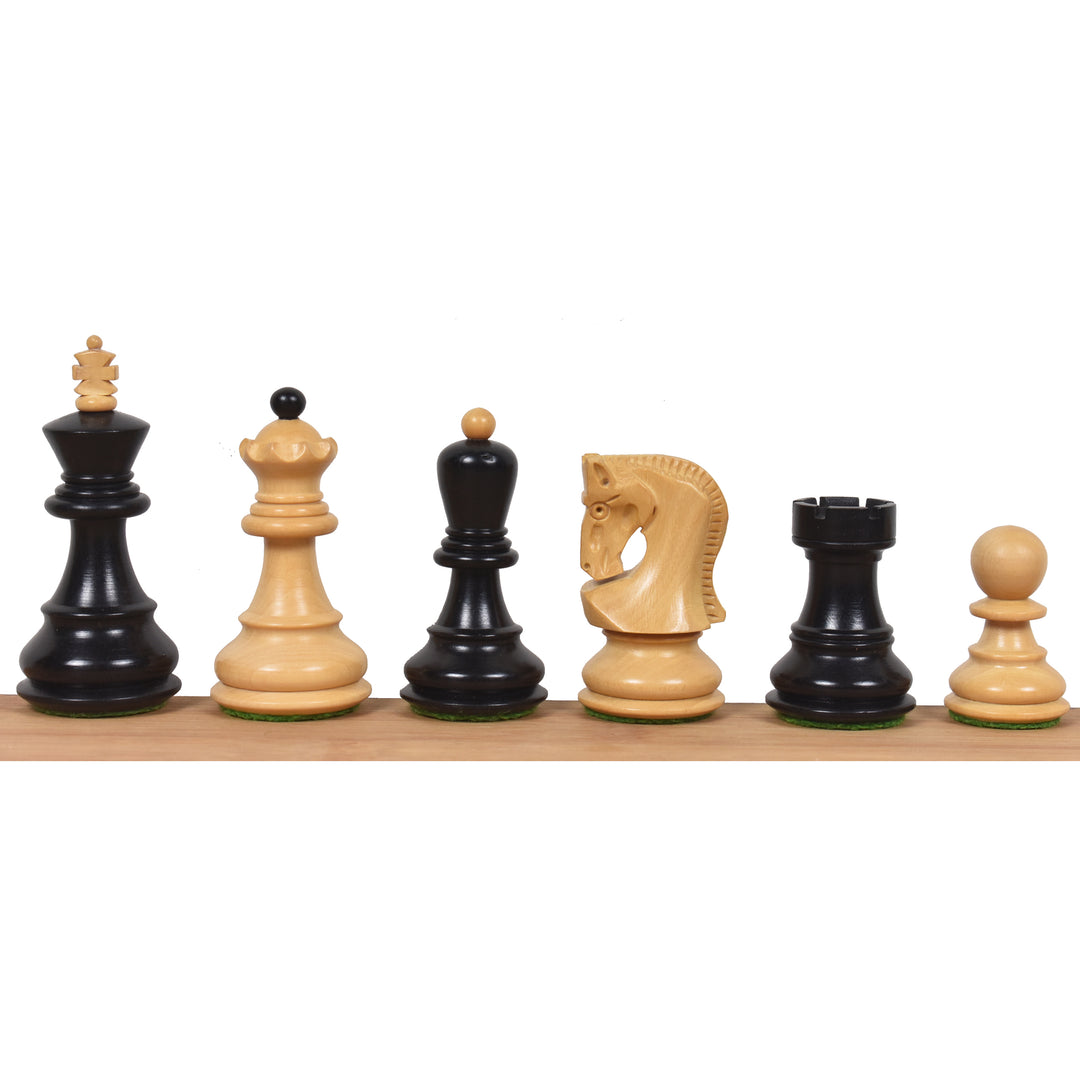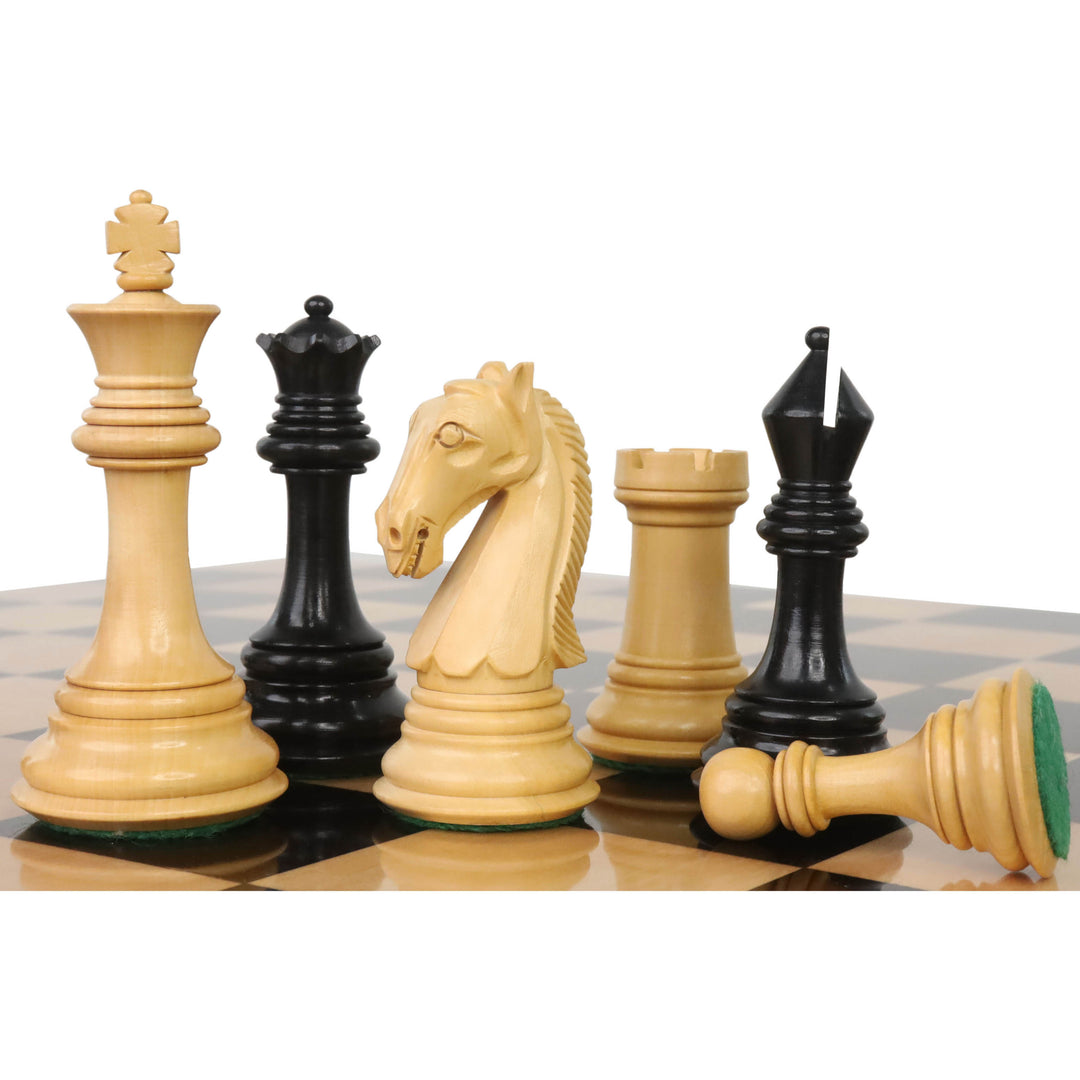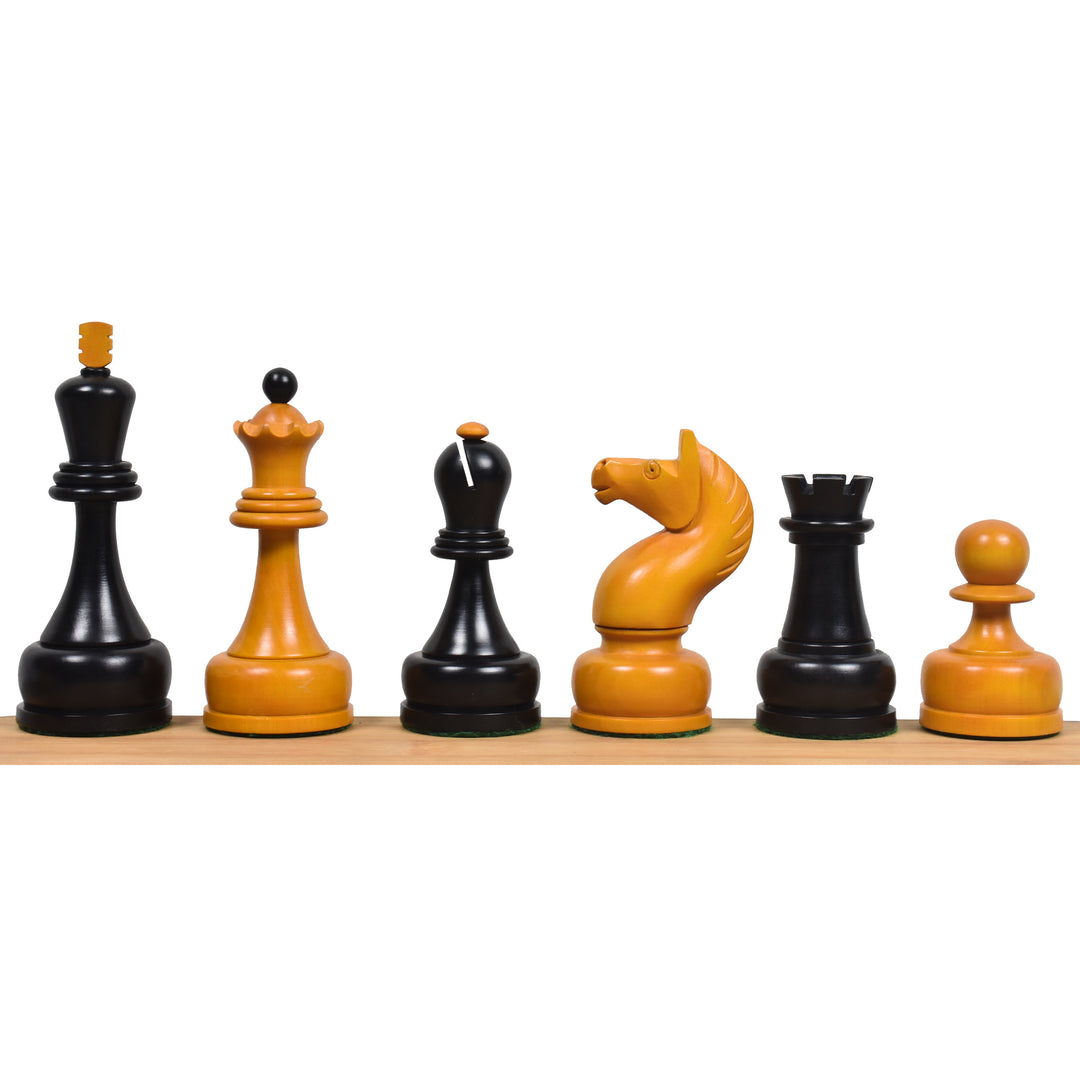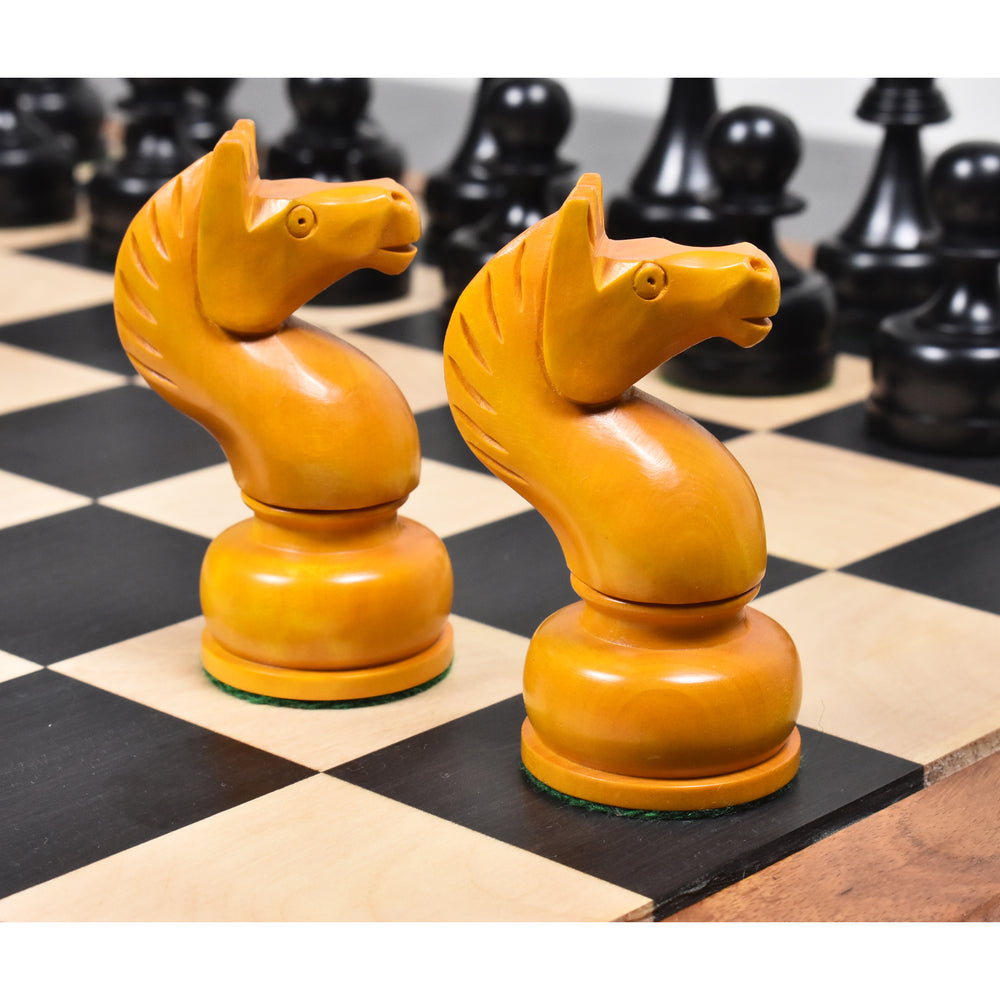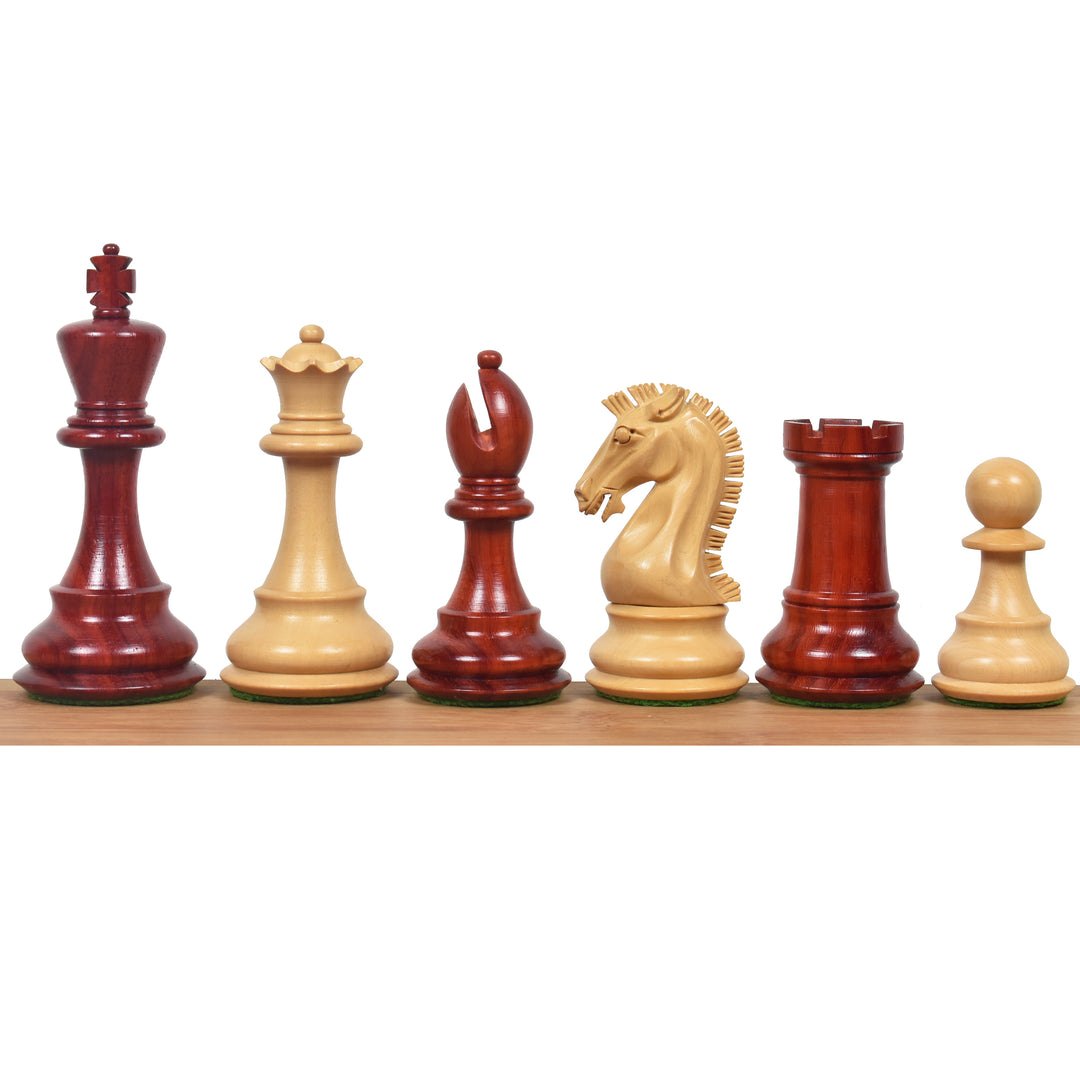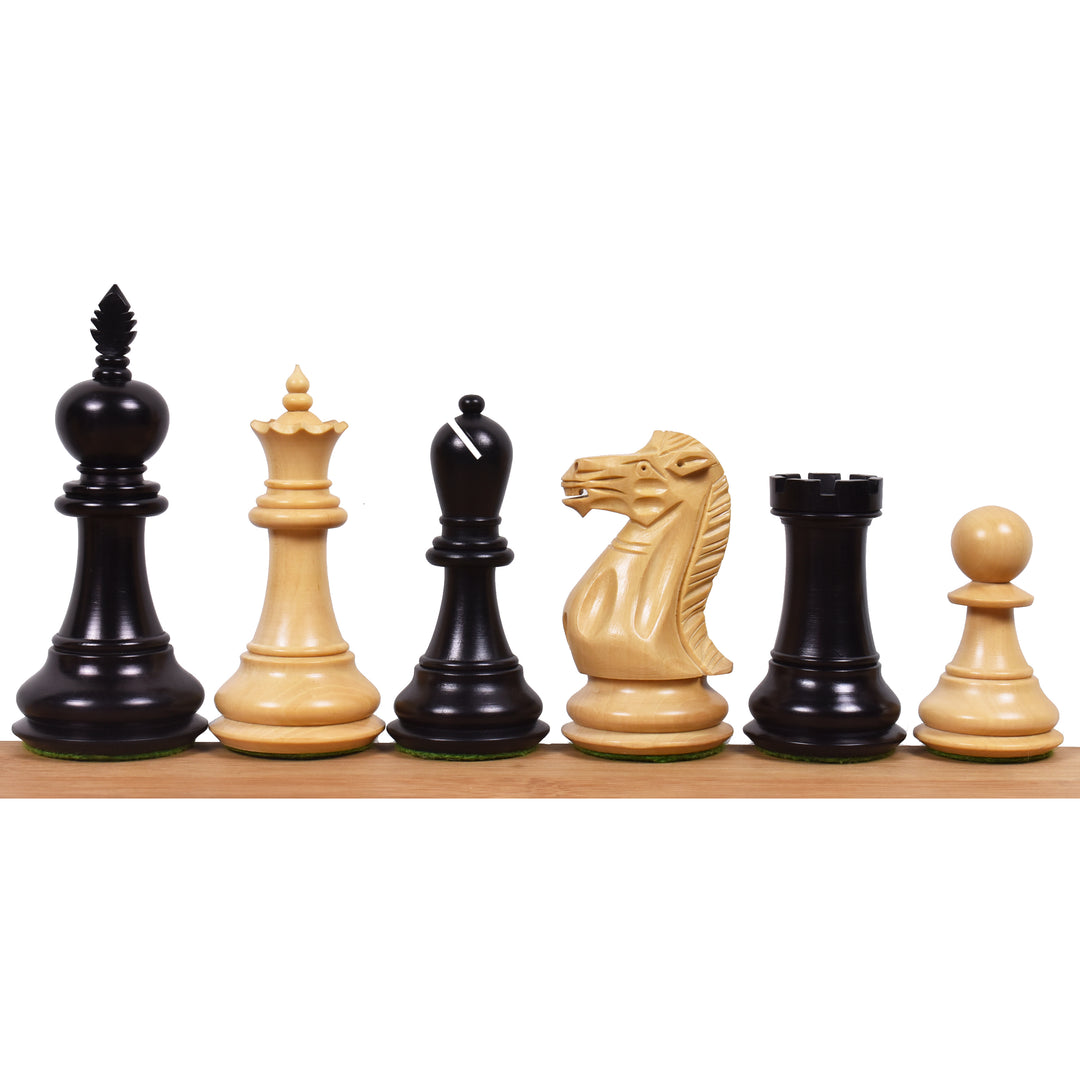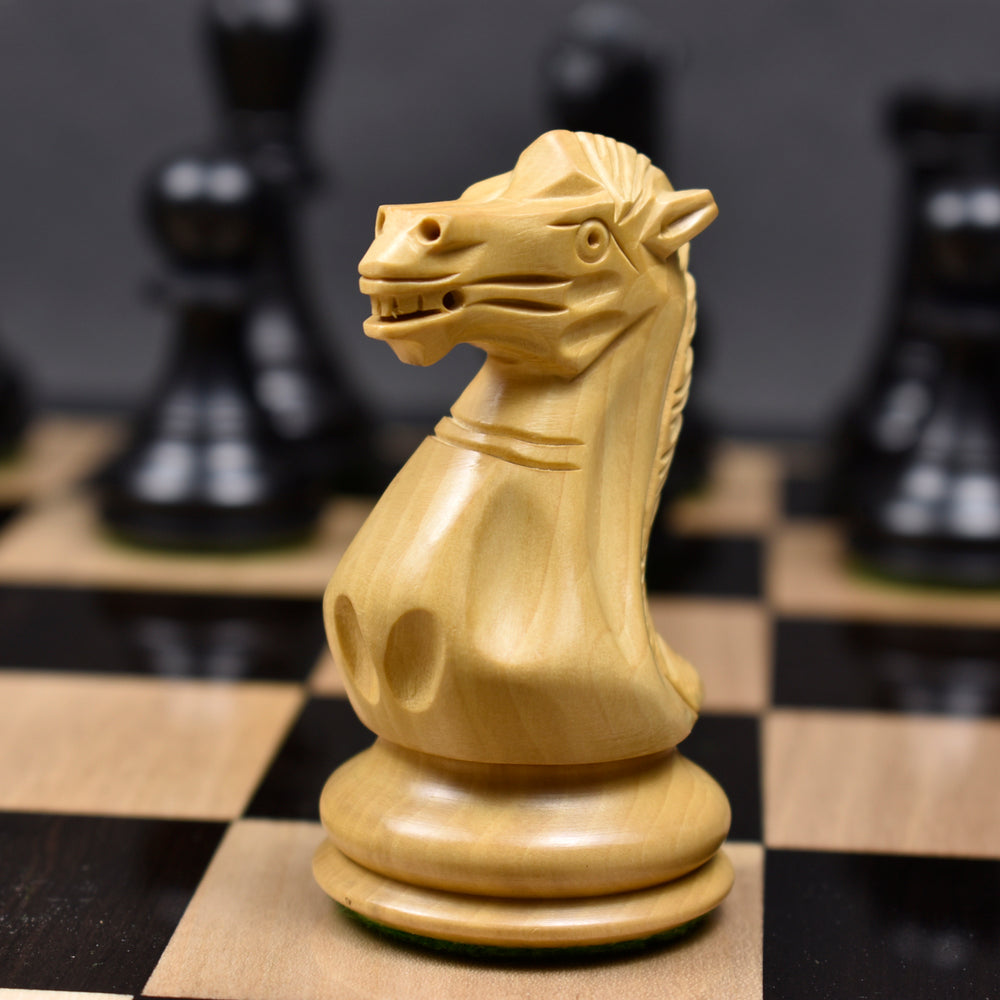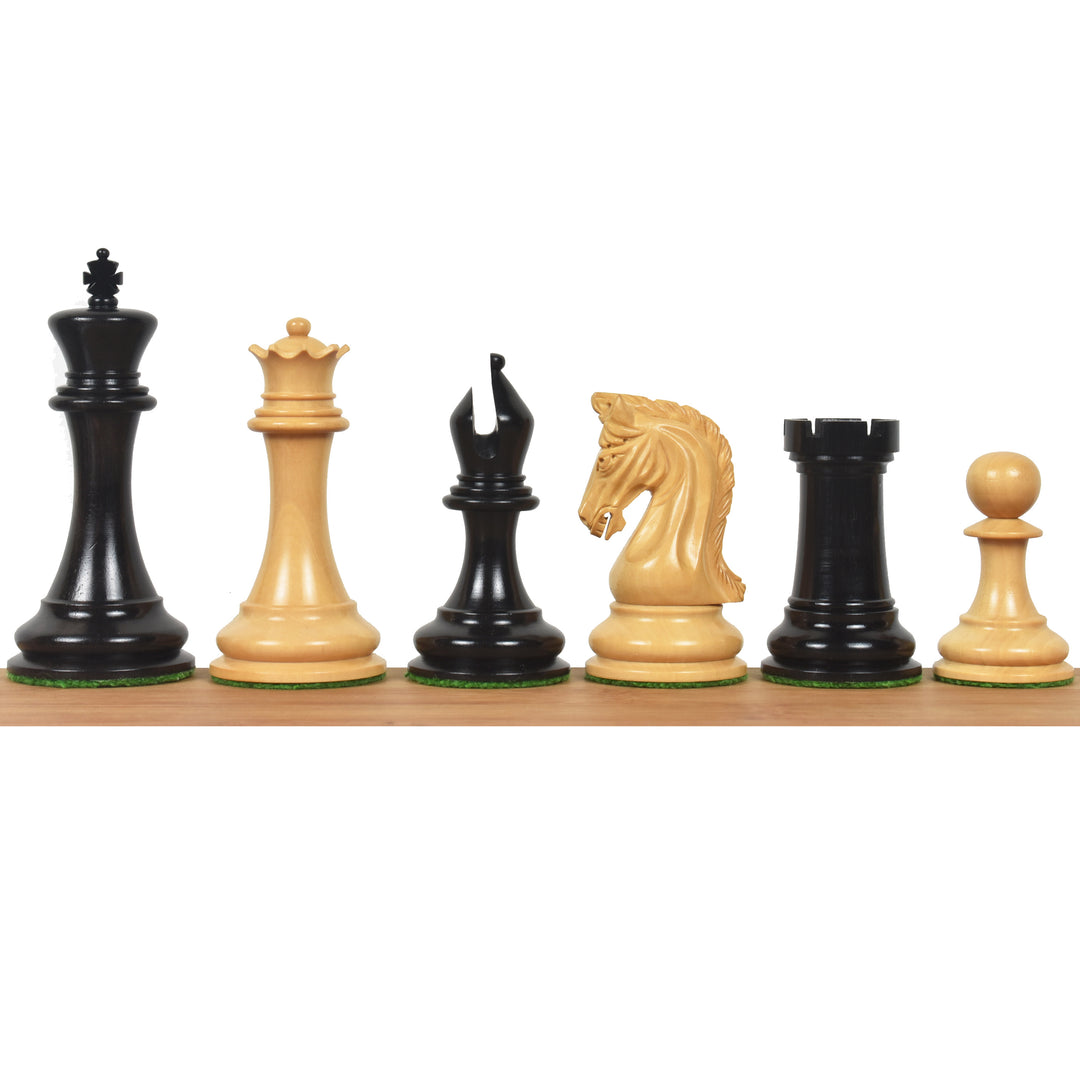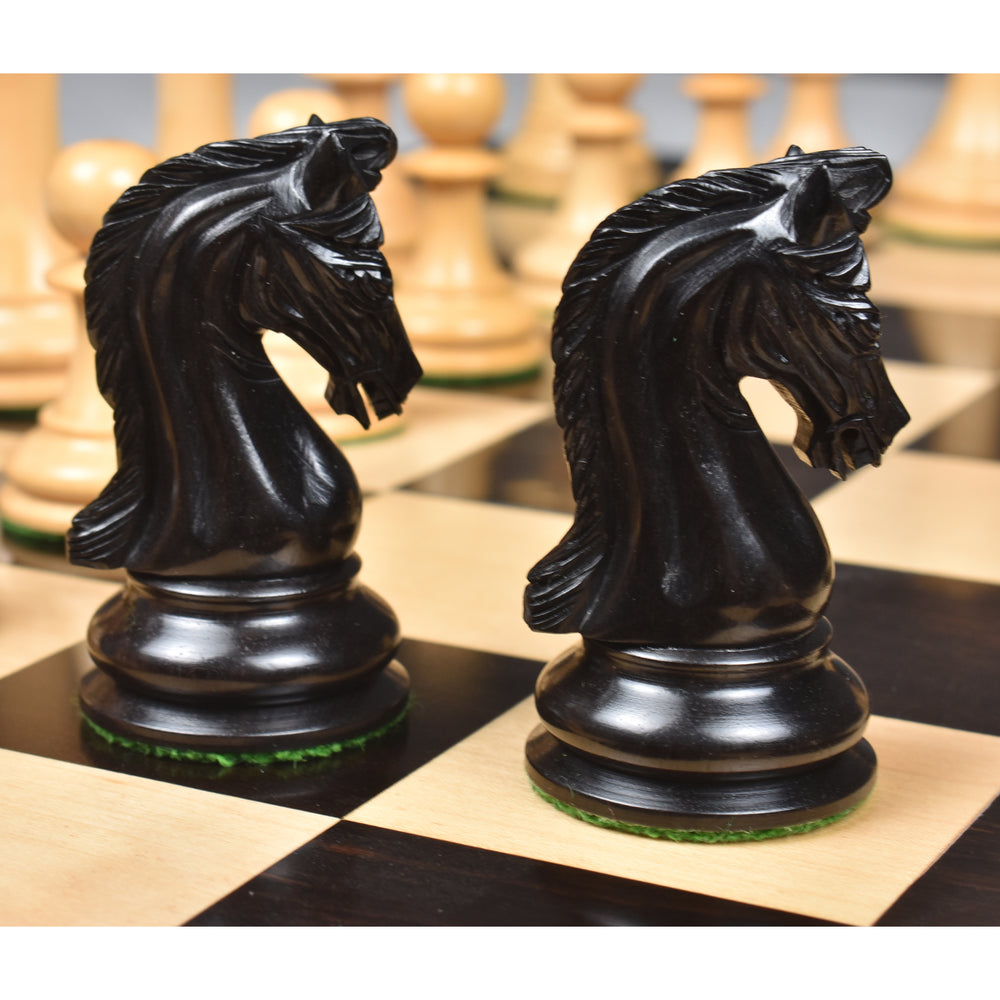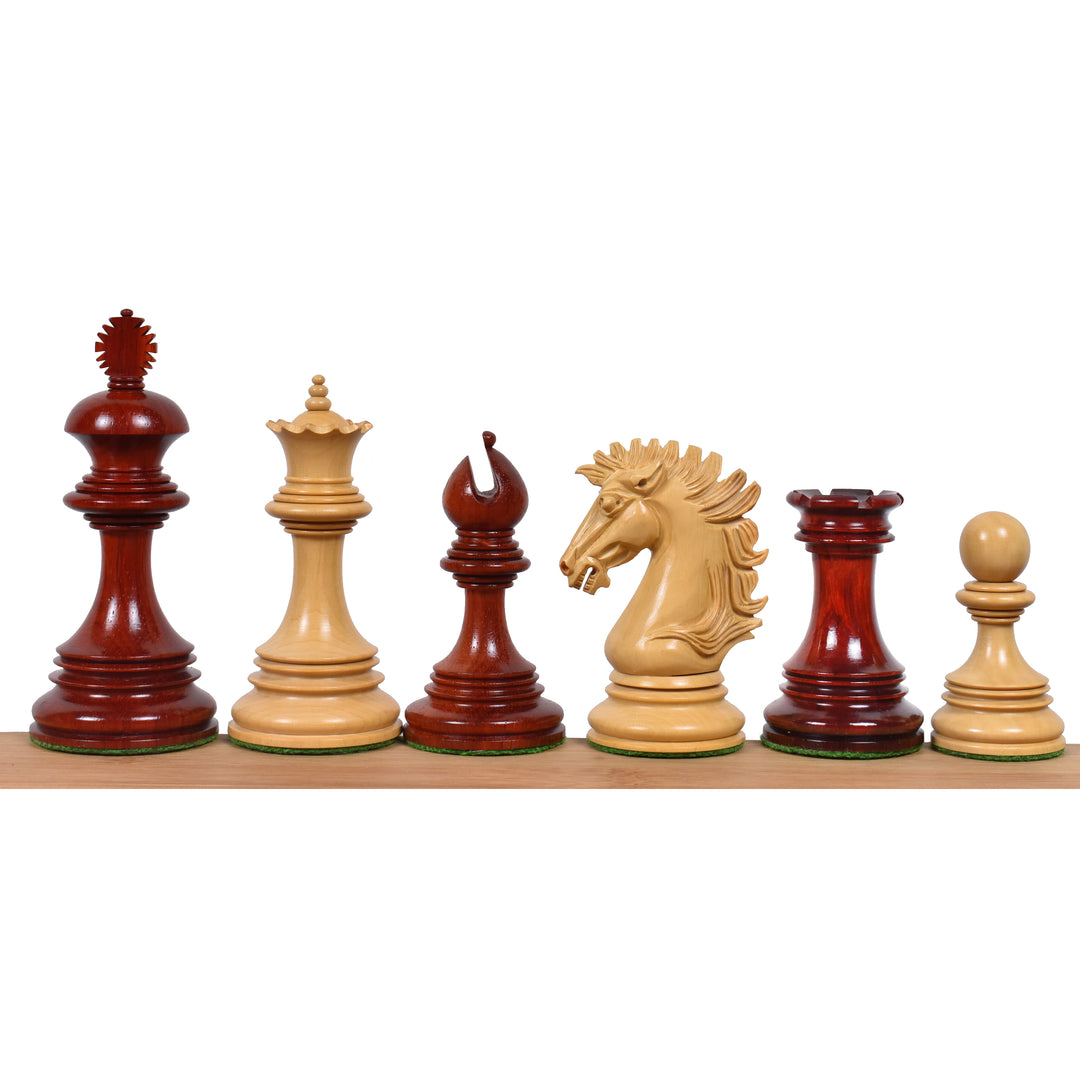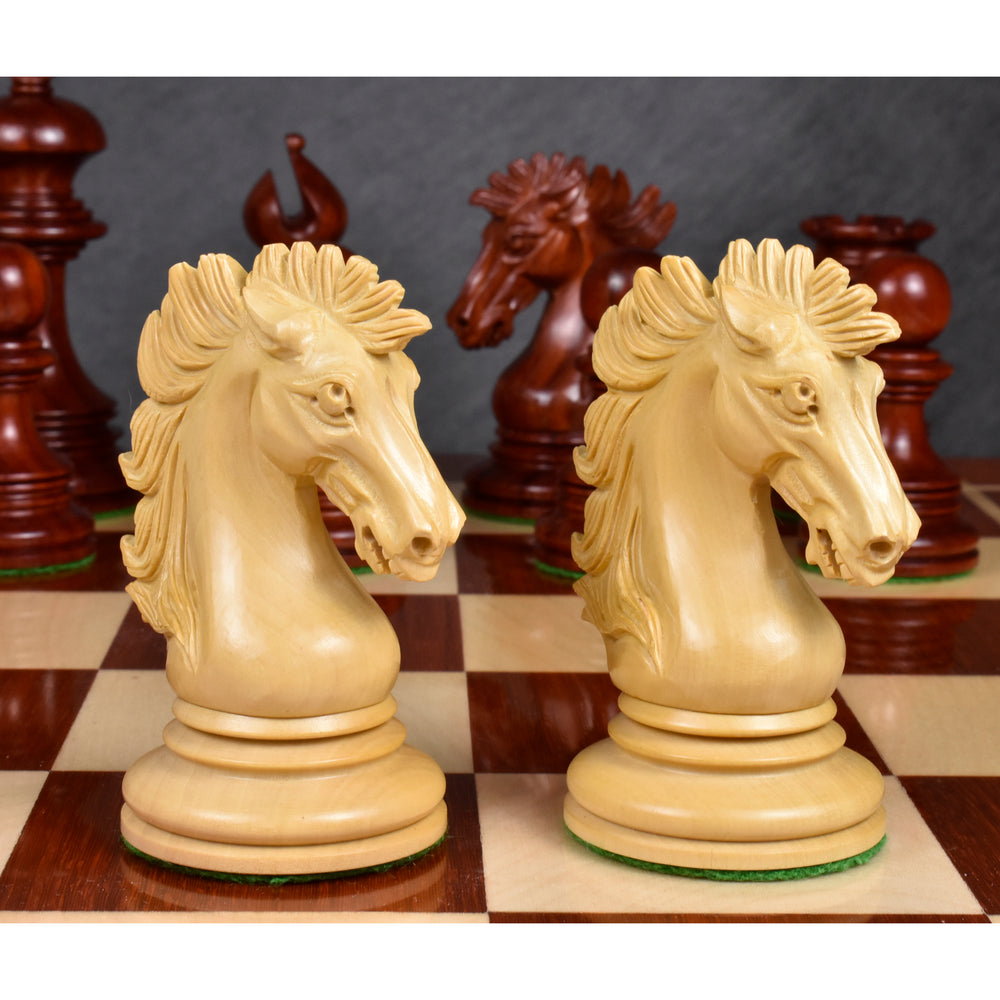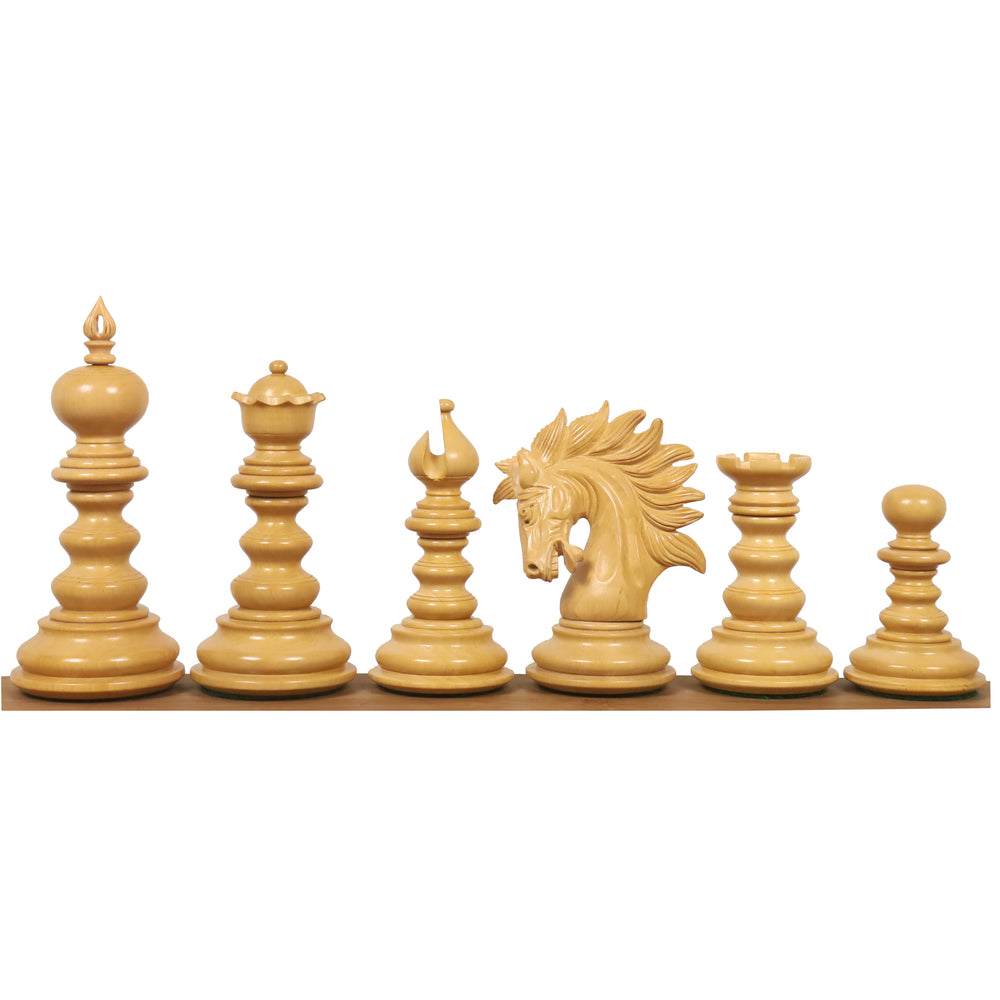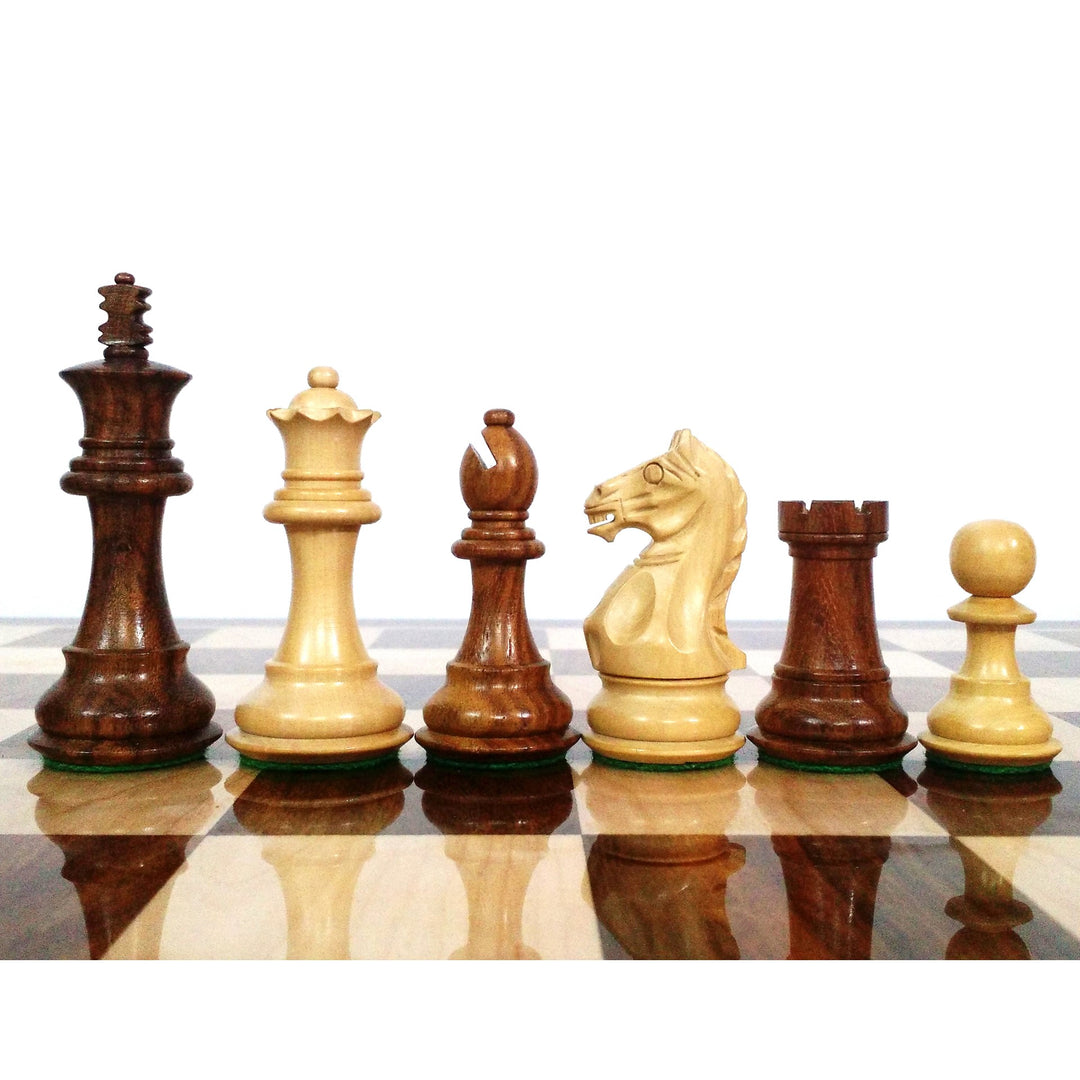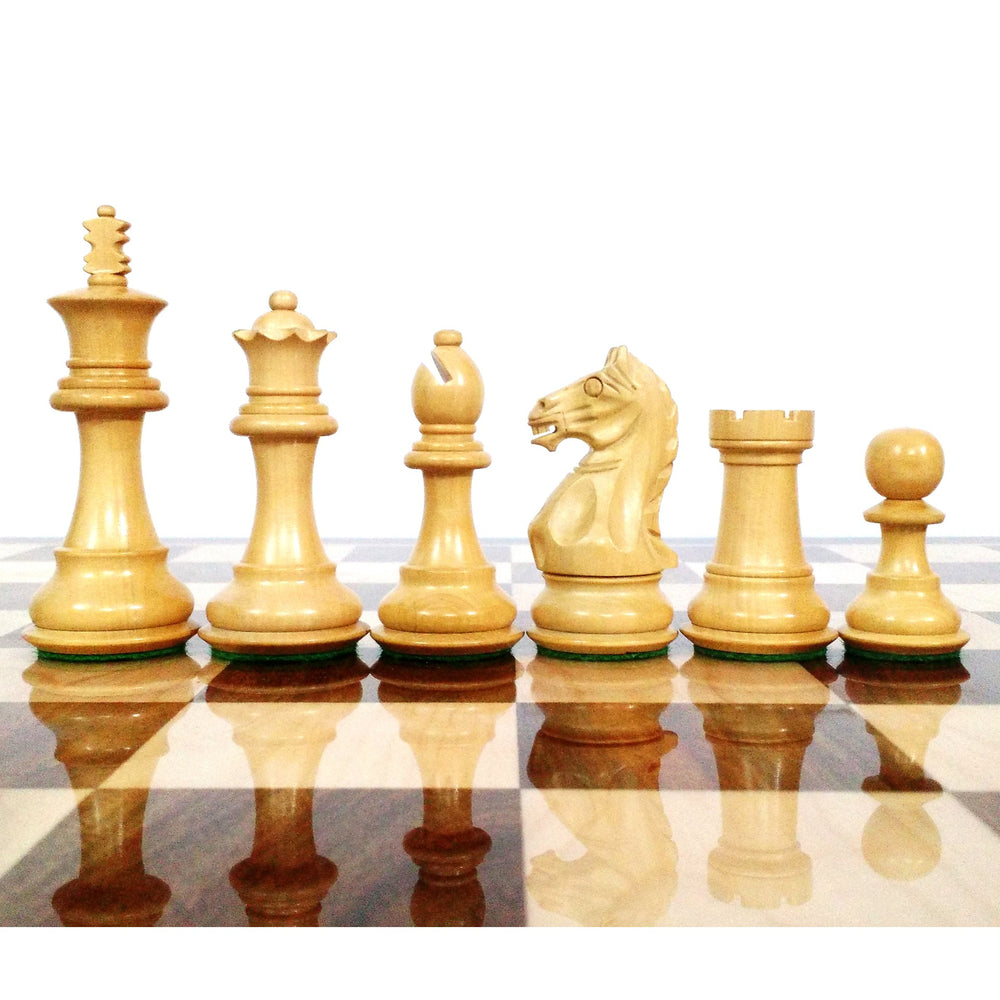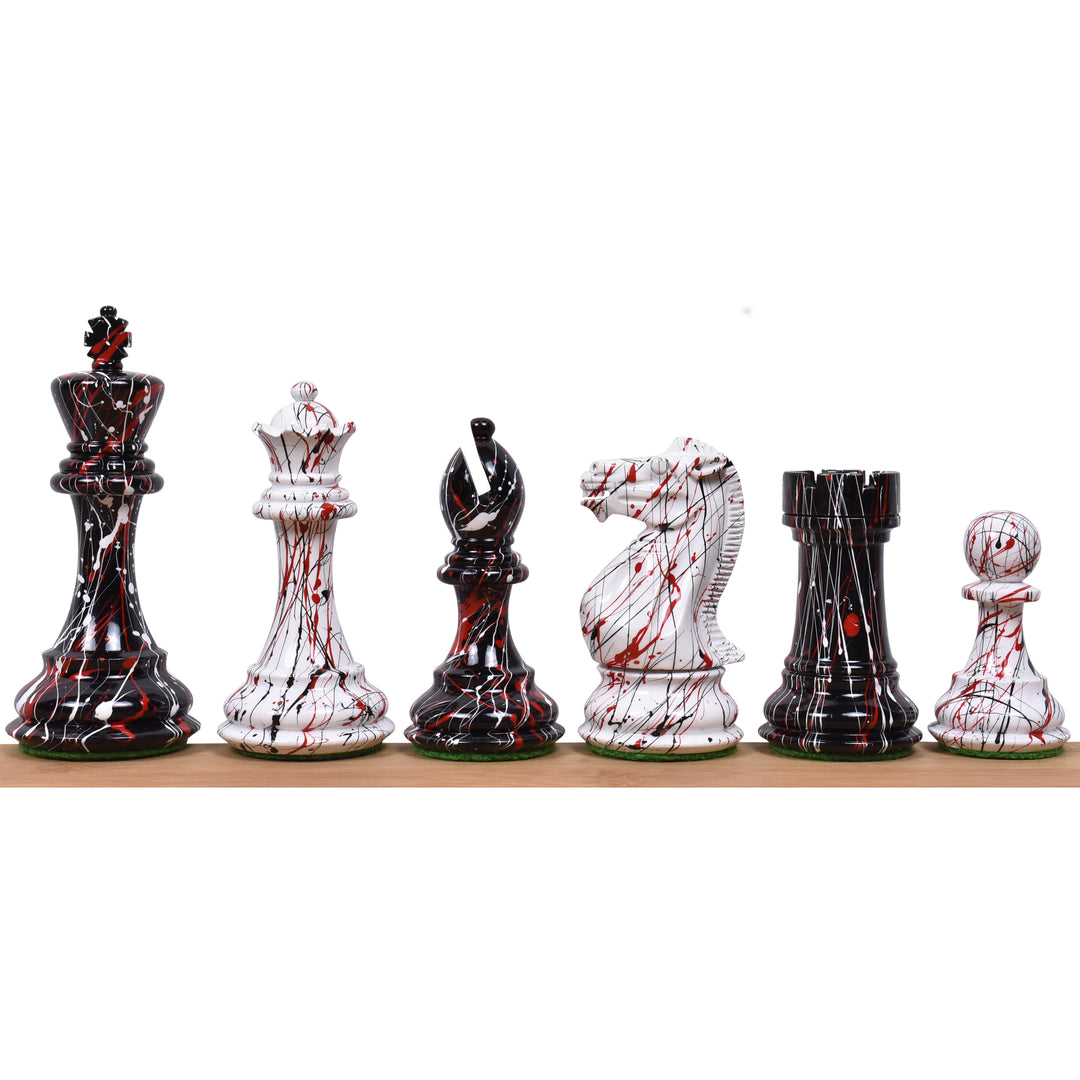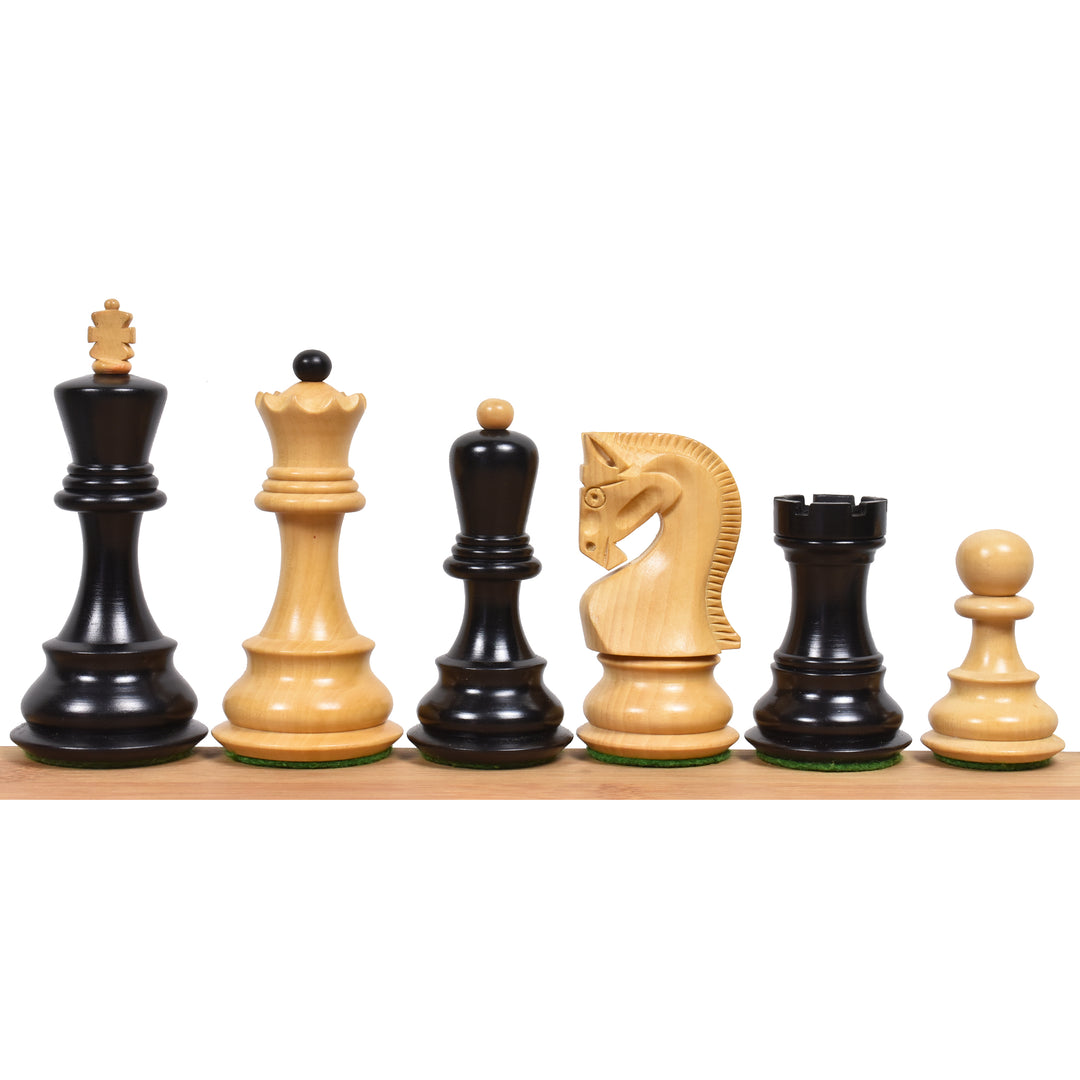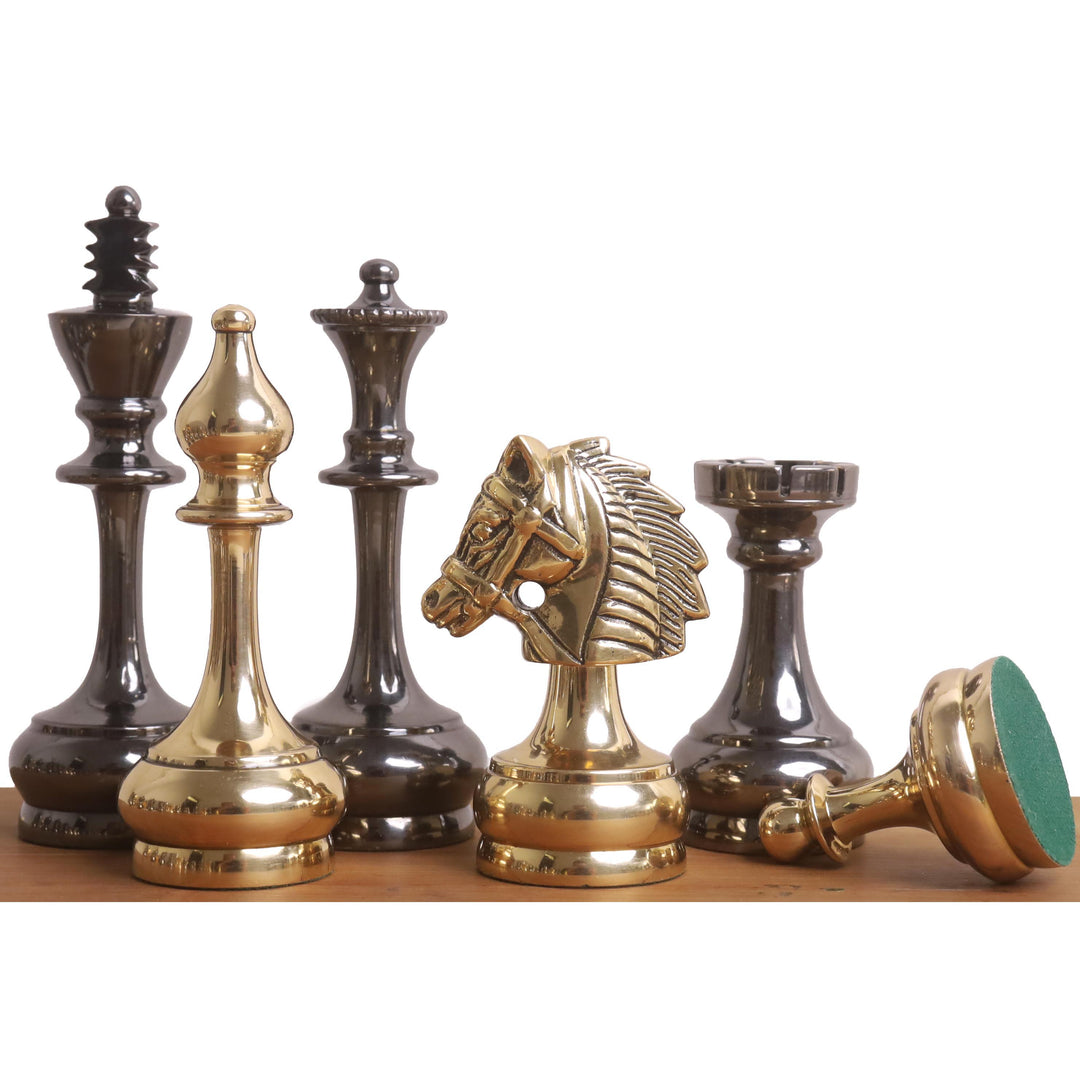You will find a tremendous choice of chess pieces and chess sets at Royal Chess Mall. The entirety of our chess pieces has been hand-selected by our highly experienced craftsmen that feel rich and additionally hold better accuracy for chess game lovers making them ideal for competitions or for your chess collections.
The beautiful chess pieces are of high premium quality and carved by our master artisans giving it a work of art, that all chess enthusiasts will appreciate. Our all types of handcrafted chess pieces come in pretty much every shape, design, and size you can consider. The chess pieces have been synchronized well with the boards to make some genuinely excellent chess sets.
Our premium pieces are intended to give you the vibe of playing great chess so select your kind of pieces from antique reproduction, economy, mid-range, luxury, and camel bone chess pieces and appreciate the round of Chess!
How to Get Chess Pieces?
Since chess pieces come in different looks, sizes, textures, and functions, many players have multiple sets.
- If you're new to chess, a basic set of plastic pieces is enough for club play.
- Wooden pieces last long, look nice and work for beginners and pros.
- For home games, a fancy wooden set adds elegance.
- Stone, marble, or alabaster pieces are great for display or slow matches.
- Theme chess pieces add a creative twist to chess.
- Silicone pieces are fun, colorful, and safe.
You can find the perfect pieces for your games by considering your preferences.
Sizing Chess Pieces to a Chessboard!
When it comes to sizing chess pieces to a chessboard, there are some general guidelines to follow to achieve a balanced and aesthetically pleasing look. Here's how you can go about it:
- King Height and Square Size: The king's height is typically used as a reference point for sizing the chessboard and the chess pieces. A common rule of thumb is to choose a square size on the board about 1.25 to 1.3 times the king's height. For example, if your king's height is 3.75 inches, go for squares that are around 3 inches in size.
- Proportionality: Maintaining a proportional look is essential. Make sure that the other pieces are sized about the king. The queen is usually slightly shorter than the king, and the other pieces follow suit in decreasing order.
- Base Diameter: The base diameter of a piece should ideally be around 75% of the square size. This allows the pieces to comfortably fit within their respective squares without crowding or looking too small.
- Pawns: Pawns are usually the most minor pieces on the board. Their height is generally around 70-80% of the height of the other chess pieces. The base diameter of a pawn can be about 50-60% of the square size.
- Visual Aesthetics: Ultimately, the sizing of the pieces should result in a visually balanced and harmonious look on the board. Avoid overcrowding the squares with larger pieces or making the pieces too small that they lose their impact.
- Personal Preference: Of course, personal preference plays a role. Some prefer larger pieces for easier visibility, while others may appreciate a more compact setup.
Remember that these guidelines are not set in stone and can vary depending on personal taste and the specific set you're working with. It's a good idea to physically place the pieces on the board as you go along to get a sense of how they look together and whether the proportions feel right to you. Ultimately, achieving a good balance between piece and board size is about creating a visually appealing and functional setup you enjoy playing with.
Selecting Chess Pieces for a Particular Needs
Choosing the right set of pieces can enhance your playing experience and meet your preferences. Here are some factors to consider when selecting pieces for particular needs:
Tournament Play
If you plan to use the set for tournament play, consider a set that adheres to the standard Staunton design. These sets are recognized and used in official chess competitions. Look for well-defined pieces with clear distinctions between the chess pieces and appropriate sizing.
Casual Play
For casual play, you can choose based on your style. You might opt for unique or themed sets that reflect your interests, such as historical, fantasy, or artistic designs. Just ensure that the pieces are distinguishable and suit your playing style.
Visual Impairments
If you or someone you're playing with has visual impairments, select pieces with clear and distinct features. Larger and more contrasting pieces with tactile elements, such as raised symbols or textures, can be helpful for easier identification.
Travel-Friendly
If you need a chess set for travel, look for compact, portable sets. Magnetic sets with pieces that stay in place during movement are ideal for playing on the go.
Decorative Sets
If you're looking for a set to display as a decorative piece, you can choose from a wide range of artistic and ornate designs. Consider materials like marble, wood, or metal for an elegant touch.
Educational Sets
If the set is for educational purposes, consider sets with larger pieces that are easy to handle and analyze. Some groups also come with notation guides printed on the board for teaching and learning purposes.
Budget Considerations
Chess sets come in a variety of price ranges. Determine your budget and find a group that meets your needs without breaking the bank. High-quality wooden sets are durable and visually appealing.
Eco-Friendly Options
If environmental sustainability is essential to you, look for sets made from sustainable materials like bamboo or recycled materials.
Customization
Some stores offer customizable options for choosing the wood, stain, and finish types for pieces. This is an excellent option if you want a personalized touch.
Special Occasions
For special occasions or as gifts, consider themed sets that reflect the recipient's interests, such as historical events, famous battles, or hobbies. Remember that the ideal chess set meets your needs and preferences. Whether you prioritize functionality, aesthetics, or a combination of both, a wide range of options cater to your particular requirements.
About Chess Pieces
A standard chess set comprises 32 pieces, with 16 for each side. These pieces are often called chessmen, though experienced players commonly term them "material." The rules of chess dictate their initial arrangement, movement patterns, and any particular actions allowed.
Pawn
The pawn, the lowest-valued piece, appears eight times per player. The initial pawn setup is known as "pawn structure." On the opening move, a pawn can advance one or two squares. Subsequent moves are limited to a single square. Pawns capture diagonally, forward only, either left or right. When a pawn reaches the opposite end of the board, it can be promoted to any other piece except the king.
Knight
Part of the "minor pieces" alongside bishops, the knight is valued at three points, equivalent to three pawns. Its unique movement allows it to jump over other chess pieces, granting strategic advantages in situations where pawns obstruct standard movement. The knight moves in an L-shape: two squares in one direction followed by one square perpendicular, or vice versa.
Bishop
Another "minor piece" akin to the knight, bishops also hold a value of three points. Bishops can travel diagonally across any number of squares, but they remain confined to the color of their starting square. Their movement is restricted to a single color.
Rook
Valued at five points, the rook is a "major piece," slightly more valuable than a knight or bishop. In tandem with its fellow rook, it's somewhat stronger (by one pawn) than a queen. Rooks move horizontally or vertically, covering any number of unobstructed squares. They can capture by occupying an opponent's square.
Queen
The most valuable piece, the queen, holds a worth of nine points, equivalent to three minor pieces. Its value is nearly equal to two rooks and surpasses every pawn. The queen's movement is expansive: it can traverse any number of unoccupied squares horizontally, vertically, or diagonally, effectively combining rook and bishop moves.
King
The most crucial piece, the king, is central to chess strategy. Its movement is limited to one square in any direction. Notably, a king cannot move into a square under attack or stand adjacent to another king. Although often defensive, a king can be employed for offensive maneuvers during the endgame. A game concludes with checkmate, signifying the defending king is in a hopeless position. Technically, the king is never captured; the game ends with a checkmate declaration.
FAQs















